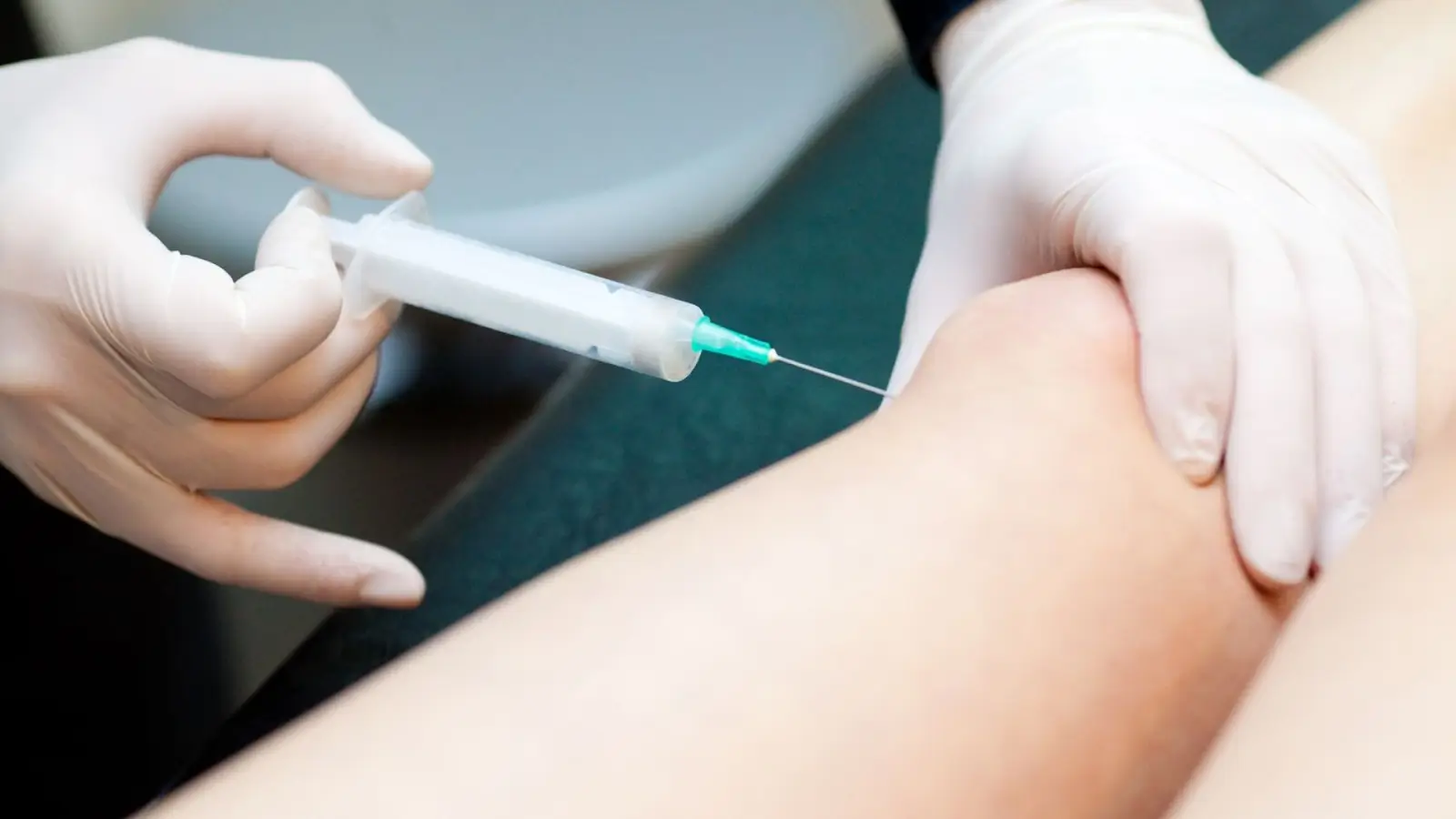
Hyaluronic acid is widely used in medical treatments to lubricate joints, particularly in conditions like knee osteoarthritis. Studies have shown that intra-articular injections of hyaluronic acid can effectively reduce pain and improve joint function in osteoarthritis patients.
Crespine Gel is an injectable treatment that combines hyaluronic acid and sodium chloride. This formulation aims to alleviate joint pain by enhancing joint lubrication and reducing inflammation, offering relief for individuals suffering from osteoarthritis.
In this article, we will explore the specific ingredients of Crespine Gel—hyaluronic acid and sodium chloride—their roles in joint health, and how they contribute to the treatment’s effectiveness.
Key Takeaways
- Hyaluronic acid in Crespine Gel enhances joint lubrication and reduces friction, providing effective pain relief for osteoarthritis patients.
- Sodium chloride stabilizes the gel’s formulation while maintaining the pH and osmolality, ensuring its compatibility with the body.
- The biocompatibility of Crespine Gel’s ingredients contributes to its safety and minimizes the risk of side effects.
- Crespine Gel effectively improves joint mobility and function, offering long-lasting relief and enhancing the quality of life for individuals with joint degeneration.
About: Doctor Medica is your trusted supplier of top-quality dermal fillers, viscosupplements, and more for your medical practice. We offer genuine products from leading brands at the lowest prices. Contact Doctor Medica today to order Crespine online.
The Role of Hyaluronic Acid in Crespine Gel

Hyaluronic acid is a naturally occurring substance found in the body, particularly in connective tissues, skin, and eyes. It is a glycosaminoglycan, known for its remarkable ability to retain water, contributing to its hydrating properties. These characteristics make it a popular ingredient in various medical and cosmetic treatments.
The hyaluronic acid in Crespine Gel is crucial in providing lubrication and cushioning in the joints. Its viscoelastic nature allows it to act as a shock absorber, reducing friction between cartilage surfaces during movement. This helps to alleviate pain and improve joint function in conditions such as osteoarthritis.
By enhancing the viscosity and elasticity of the synovial fluid, hyaluronic acid in Crespine Gel contributes to better joint health, promoting smoother movement and reducing discomfort.
Benefits of Hyaluronic Acid in Joint Health

Hyaluronic acid is essential for maintaining healthy joint function, offering several key benefits:
- Reduces Pain: Hyaluronic acid minimizes friction between bones by acting as a lubricant, helping to alleviate joint pain caused by conditions like osteoarthritis. Its anti-inflammatory properties further contribute to pain relief by reducing swelling and irritation.
- Improves Joint Mobility: Hyaluronic acid enhances the viscosity of synovial fluid, allowing for smoother joint movement. This improved lubrication helps individuals regain mobility and perform daily activities with greater ease.
- Promotes Overall Joint Health: Beyond pain relief and mobility, hyaluronic acid supports the long-term health of joints by nourishing cartilage and protecting it from wear and tear. This preservation of joint structures helps slow the progression of degenerative conditions.
Incorporating hyaluronic acid through treatments like Crespine Gel provides a non-surgical solution to enhance joint comfort and functionality.
Sodium Chloride

Sodium chloride, commonly known as salt, is a crucial component in Crespine Gel. Its primary function is to maintain the stability of the gel, ensuring that it remains effective and safe for use over time. By contributing to the gel’s ionic balance, sodium chloride helps preserve the hyaluronic acid’s structural integrity within the solution.
Additionally, sodium chloride plays a key role in maintaining the proper pH and osmolality of Crespine Gel. This is essential for ensuring the gel is compatible with the body’s natural tissues and does not cause irritation or adverse reactions. By regulating the pH and osmolality, sodium chloride helps to create a solution that is both biocompatible and effective in providing joint lubrication and pain relief.
The Safety and Efficacy of Crespine Gel
Crespine Gel is formulated with carefully selected ingredients that contribute to its safety and efficacy in joint injection therapy.
- Safety: Both hyaluronic acid and sodium chloride are biocompatible and naturally found in the body, reducing the risk of adverse reactions. This ensures the gel is well-tolerated, even in sensitive individuals, making it a safe choice for joint pain management.
- Efficacy: Hyaluronic acid replenishes the depleted synovial fluid, providing lubrication and cushioning to the joints, while sodium chloride stabilizes the solution, ensuring its smooth application. Together, these components restore joint functionality by reducing friction and inflammation.
These ingredients underline the Crespine Gel benefits: effective pain relief, improved joint mobility, and enhanced quality of life for individuals suffering from osteoarthritis and related conditions.
Conclusion
Crespine Gel’s innovative formulation, combining hyaluronic acid and sodium chloride, effectively manages osteoarthritis symptoms. Hyaluronic acid offers lubrication and cushioning, while sodium chloride ensures the gel’s stability and compatibility with the body. This combination underscores the treatment’s safety and efficacy in improving joint function and relieving pain.
As a minimally invasive option, Crespine Gel presents a promising alternative for those seeking relief from joint degeneration.
FAQs
1. What is the main ingredient in Crespine Gel, and what does it do?
Crespine Gel contains hyaluronic acid, which lubricates and cushions the joints, reducing pain and improving mobility.
2. Is Crespine Gel safe for everyone?
Yes, Crespine Gel is biocompatible and safe for most individuals. However, those with specific allergies or conditions should consult their doctor.
3. How long does the relief from Crespine Gel last?
Relief typically lasts 6-12 months, depending on individual factors and the severity of osteoarthritis.
4. How does sodium chloride contribute to the effectiveness of Crespine Gel?
Sodium chloride stabilizes the gel and maintains proper pH and osmolality, ensuring safe and efficient performance.
References
Migliorini F, Maffulli N, Schäfer L, Kubach J, Betsch M, Pasurka M. Less Pain with Intra-Articular Hyaluronic Acid Injections for Knee Osteoarthritis Compared to Placebo: A Systematic Review and Meta-Analysis of Randomised Controlled Trials. Pharmaceuticals. 2024;17(11):1557. doi:10.3390/ph17111557
Chavda S, Rabbani SA, Wadhwa T. Role and effectiveness of intra-articular injection of hyaluronic acid in the treatment of knee osteoarthritis: a systematic review. Cureus. Published online April 26, 2022. doi:10.7759/cureus.24503
Bashaireh, K., Naser, Z., Hawadya, K. A., Sorour, S., & Al-Khateeb, R. N. (2015)The efficacy of cross-linked osteoarthritis single injection on knee osteoarthritis: a post-marketing Phase IV study. Drug design, development, and therapy, 9, 2063–2072. https://doi.org/10.2147/DDDT.S81524
Related Articles
Joanna Carr
What You Don’t Know About Dermal Fillers
Interested to learn more about What You Don't Know About Dermal Fillers? Browse Doctor Medica's comprehensive listing of blog posts.
Joanna Carr
Hyacorp Lips: How Long Does it Last?
Discover the lasting effects of Hyacorp Lips injections. Learn about its duration and results only from the trusted source- Doctor Medica!
Joanna Carr
Saxenda vs Mounjaro – Which Is Better for Weight Loss
Saxenda and Mounjaro are medications used for weight management, each with its unique mechanisms of action and benefits.


